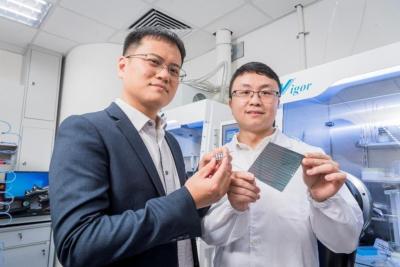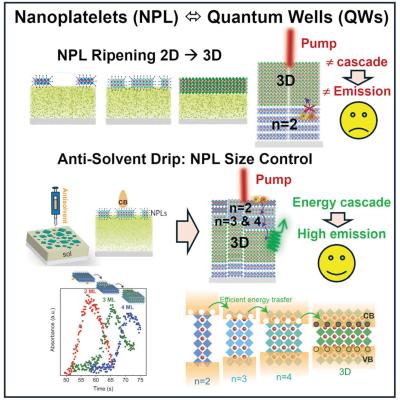Perovskite solar cells gain improved stability through atomic layer deposition of tin oxide
Researchers from City University of Hong Kong, National Renewable Energy Laboratory (NREL) and Imperial College London have improved the long-term stability of perovskite solar cells with an atomic-layer deposition (ALD) method that replaces the fullerene electron transport layer with tin oxide.
Professor Zhu Zonglong (left) and Dr Gao Danpeng of City University of Hong Kong hold their innovative solar cells. Image credit: Eurekalert
The team started by depositing the perovskite and the hole-transporter layer in a single step. Then, they used ALD to create an oxygen-deficient tin oxide layer to reduce the band offset to a thicker, overgrown layer of normal tin oxide. Solar cells had a power conversion efficiency of more than 25%, and they retained more than 95% of efficiency after 2000 hours of maximum power point operations at 65°C.






